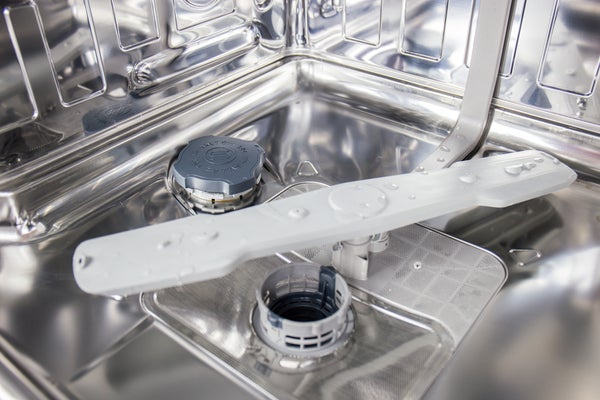
One of the most common problems reported to plumbers by homeowners is when a dishwasher won’t drain. While it can be scary to open the dishwasher door and see standing water at the bottom, it isn’t always a plumbing emergency. In fact, you may be able to correct the problem yourself without professional help.
What to Do When Your Dishwasher Won’t Drain
If draining your dishwasher is an issue, here are eight simple techniques to try at home.
1. Run the Disposal
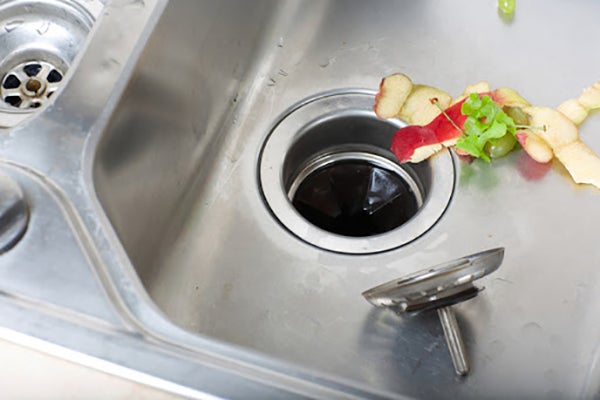
A full garbage disposal or an air gap in a connecting hose can prevent water from properly draining out of the dishwasher. Simply running the disposal for about 30 seconds may fix the issue.
2. Check for Blockages
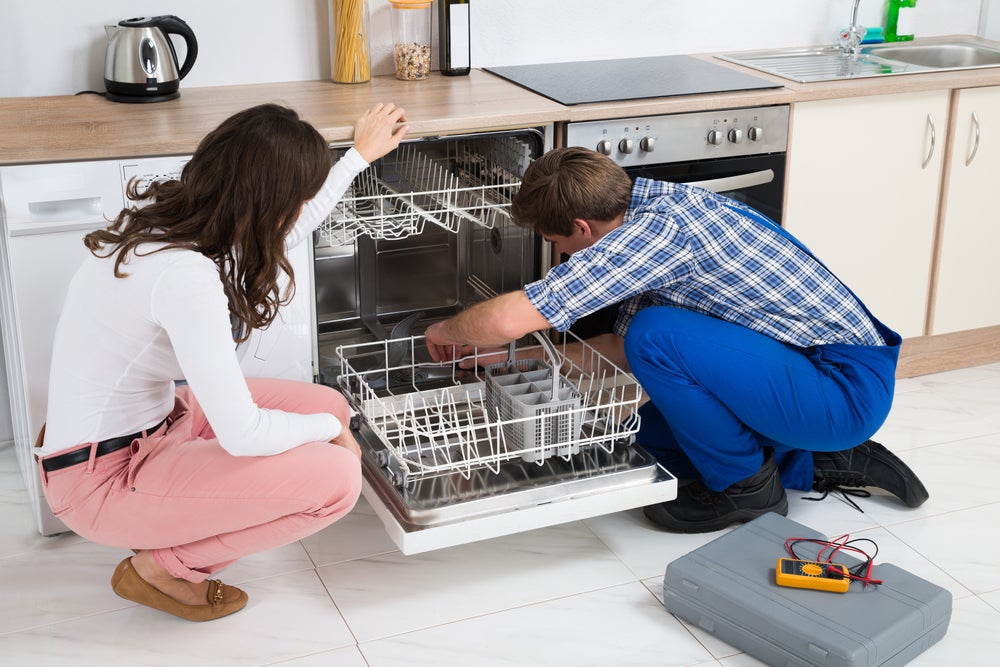
Check the bottom of the dishwasher to make sure that an item or pieces of food haven’t fallen from the rack to block the water flow.
3. Load the Dishwasher Correctly
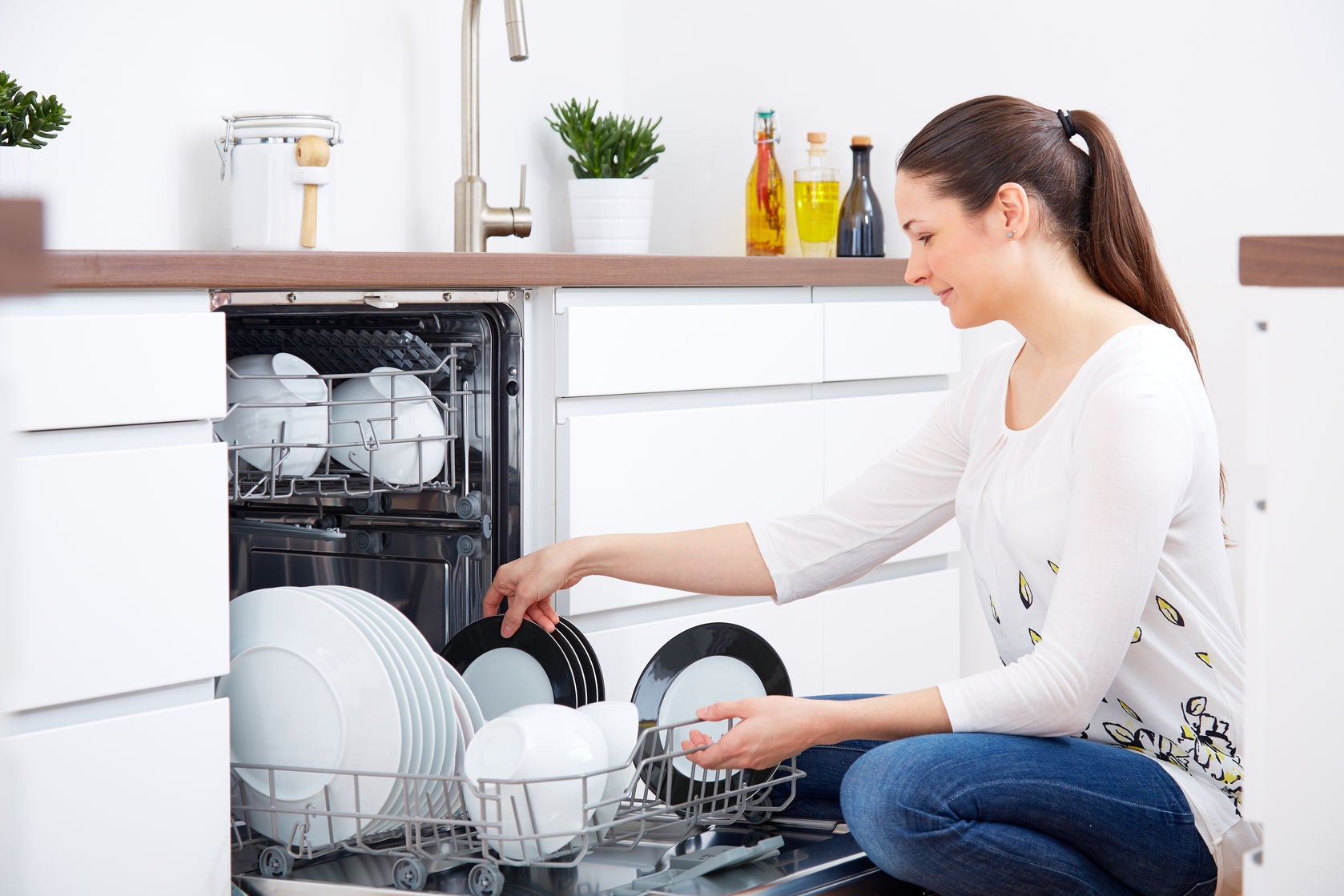
Make sure you’re loading the dishwasher correctly. Read the manufacturers’ instructions or owner’s manual for tips and directions on how to load dishes for best results.
4. Clean or Change the Filter
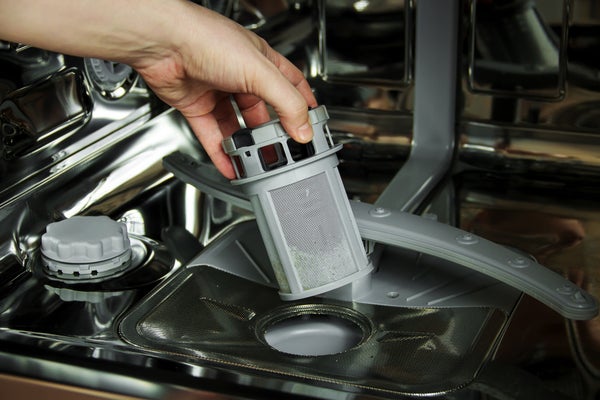
You may have a clogged dishwasher filter that’s preventing water from draining. Many homeowners don’t realize that dishwasher filters need to be cleaned regularly. Check your owner’s manual to see where the filter is located on your dishwasher, and for instructions on how and when to clean it. For many dishwashers, the filter can be found on the inside bottom of the appliance.
5. Inspect the Drain Hose
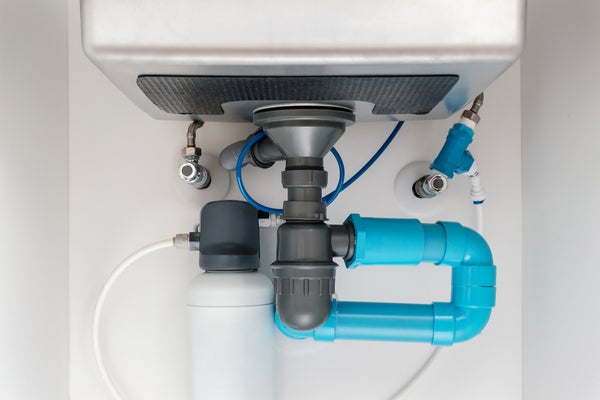
Check the drain hose connecting to the sink and garbage disposal. Straighten any kinks that you may see, which could be causing the problem. Blow through the hose or poke a wire hanger through to check for clogs. Make sure the hose seal is tight, too.
6. Double-check the Drain Valve
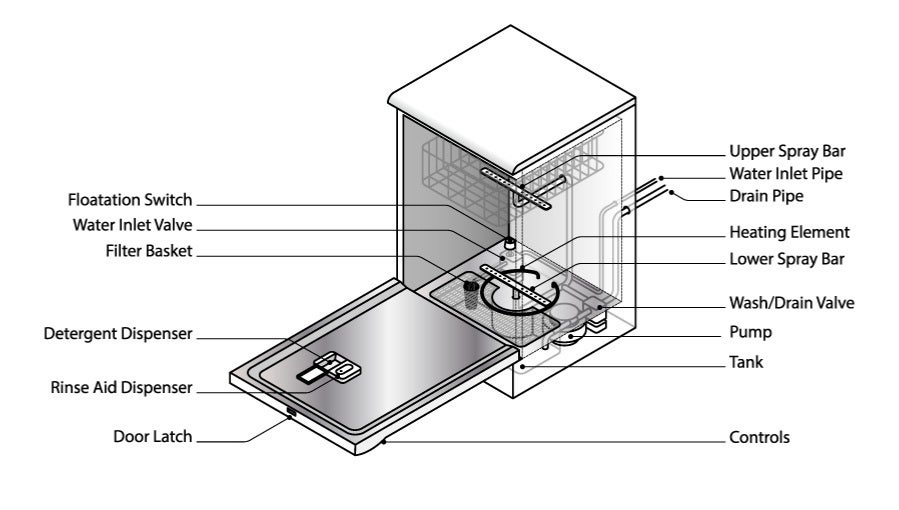
Inspect the drain valve found on the valve bracket, often located at the bottom of the machine. Push on the valve to make sure it moves freely and isn’t stuck.
7. Try Vinegar and Baking Soda
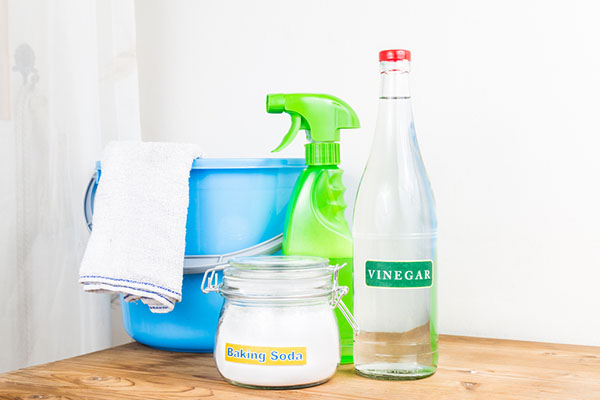
Mix together about one cup each of baking soda and vinegar and pour the mixture into the standing water at the bottom of the dishwasher. Leave for about 20 minutes. If the water is draining or starting to drain at that time, rinse with hot water and then run the dishwasher’s rinse cycle. That may be enough to help loosen any clogs or debris that are preventing the dishwasher from draining properly.
8. Listen to Your Machine While It’s Running
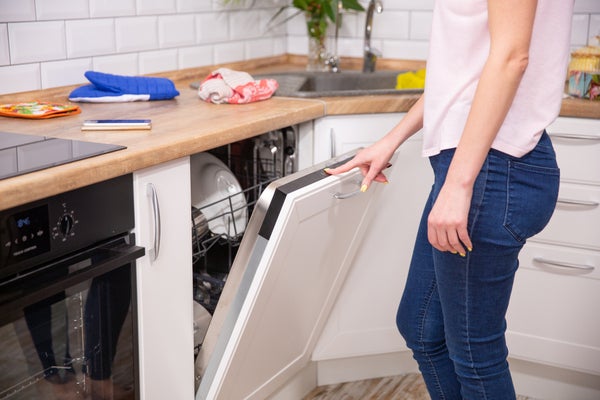
Listen to your dishwasher while it’s running a cycle. If it doesn’t make the usual operating sounds, particularly if it’s making a humming or clicking noise, the drain pump and motor may need replacing. If this occurs, it may be time to call a professional for help.
How to Properly Drain a Dishwasher
If you need to clear standing water at the bottom of a dishwasher, here’s how to drain it:
- Line the floor under the dishwasher with towels or newspaper.
- With a measuring cup or a large ladle, scoop the water from the bottom into a bowl or the sink.
- When the water becomes too shallow to scoop, soak up the remaining moisture with a cloth or paper towels.
Always make sure that you’re using the right type of dish detergent per the manufacturer’s directions, to avoid clogging the drain. Taking some preventative steps to keep your dishwasher running smoothly can also help you avoid drainage issues in the future.
Source: American Home Shield
